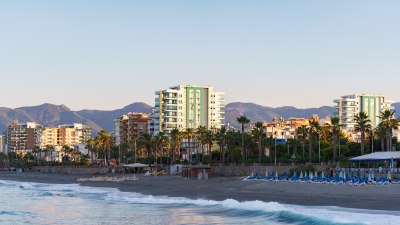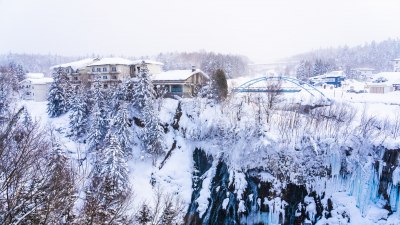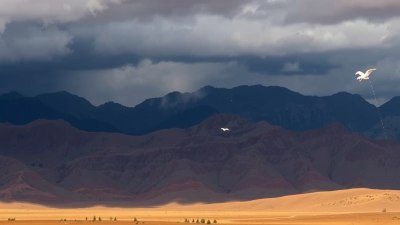Why Every Beach Town Has That One Wind Tunnel Street
Discover why beach towns feature iconic wind tunnel streets, their significance, and how they enhance coastal life.

Image by arthurhidden on Freepik
When you visit a beach town, there’s often a familiar scene: a long, slightly narrow street where the wind seems to whip through like a natural funnel, creating a noticeable change in atmosphere. These streets, affectionately dubbed 'wind tunnel streets', can be found in nearly every coastal community around the globe. Each has its own unique charm and character, but they share some common characteristics that contribute significantly to the allure of beach towns. This article will delve into the underlying reasons for the presence of wind tunnel streets, how they shape the experience of beach town life, and their impact on both locals and tourists.
Understanding Coastal Geography
The geography of a beach town plays a vital role in the formation of wind tunnel streets. Many coastal towns are situated between body of water and natural barriers like cliffs or hills, which can significantly affect wind patterns. When the wind blows from the ocean towards the land, it is funneled through any available openings in these natural obstacles. If a street cuts through a narrow section, it can create that distinctive wind tunnel effect. The design and orientation of buildings along these streets can also enhance or mitigate the breezes that sweep through.
Urban Planning and Design
Architects and urban planners in beach towns often consider the wind when designing streets and buildings. Wind tunnel streets may not be a deliberate design choice, but they are part of how towns evolve over time. In many instances, streets are laid out to provide easy access to the beach and other amenities. The result is a network of streets that can lead to unexpected wind tunnels, particularly in towns with a grid-like pattern. The spacing between buildings and storefronts can also influence wind flow, causing some streets to experience stronger breezes than others.
The Role of Local Flora
Beach towns often boast lush foliage that adds to their appeal. Palm trees, sea oats, and other flora not only contribute to the aesthetic charm but can also affect wind patterns. Vegetation can obstruct wind flow, creating microclimates along certain streets. Interestingly, towns may have designated wind tunnel streets where the tree canopy allows for consistent breezes, making those areas cooler and more comfortable for residents and visitors alike. This interplay between nature and human design shapes the environment experienced in these towns.
Activities and Atmosphere
The presence of wind tunnel streets contributes significantly to the activities and ambiance of beach towns. These streets often become hubs for outdoor dining, shopping, and entertainment. Restaurants and cafes may position their patios along these breezy avenues, where patrons can enjoy meals and drinks while feeling the fresh sea air. Additionally, wind tunnel streets often become gathering spots for festivals and local events, creating a sense of community that enhances the overall experience of beach life.
Environmental Considerations
Wind tunnel streets also have important implications for environmental considerations in beach towns, particularly in terms of climate and weather. Strong winds can help to disperse humidity, contributing to more comfortable conditions during warmer months. This natural ventilation can reduce the need for artificial cooling in nearby buildings, leading to lower energy consumption and a more sustainable approach to living. Furthermore, towns facing the risk of rising sea levels and increasingly severe storms may benefit from the natural wind barriers created by buildings and trees.
Wind Energy Potential
In an era where sustainability is paramount, beach towns with notable wind tunnel streets may also present opportunities for harnessing wind energy. The consistent and powerful winds experienced in these areas can be advantageous for implementing wind turbines, contributing to local renewable energy initiatives. By capitalizing on the natural resources available, beach towns can not only enhance their energy independence but also position themselves as environmentally conscious communities. Such initiatives may draw eco-conscious tourists seeking places that prioritize sustainability.
Tourism and Economic Impact
Wind tunnel streets serve as an economic driver in many beach towns. The breezy allure of these streets attracts tourists looking for enjoyable outdoor experiences. As visitors stroll through these areas, they are likely to stop at shops, indulge in local cuisine, and partake in recreational activities. This increased foot traffic can have a significant positive impact on local businesses, fostering a thriving economy. Consequently, towns may prioritize the upkeep and appeal of these wind tunnel streets to sustain their attractiveness to visitors.
Unique Local Flavor
Every beach town has its unique character, influenced by local culture, history, and lifestyle. The presence of wind tunnel streets adds to this distinctiveness. Some towns may boast quaint beach cottages lining the streets, while others feature modern architecture that reflects the local vibe. The shops and eateries located along these avenues often showcase local artisans and culinary delights, further embedding the uniqueness of the area. This diverse cultural representation provides residents and visitors with an authentic taste of beach town life.
The Science of Wind
Understanding the science of wind can deepen our appreciation for wind tunnel streets. Wind is created by the uneven heating of the Earth’s surface, which causes air to move from high-pressure areas to low-pressure areas. Ocean breezes are influenced by the temperature differential between land and water, often resulting in a cooling effect during the day. The shape and layout of a beach town can intensify these effects, leading to the creation of wind tunnels as winds are funneled through narrow streets and openings. Recognizing these forces can also enhance our awareness of how urban spaces interact with natural elements.
Preserving Wind Tunnel Streets
As beach towns evolve, there is a growing need to preserve the charm and functionality of wind tunnel streets. Urban development can threaten these spaces as buildings are erected or renovations take place, potentially disrupting the wind patterns that have been naturally established over time. Community efforts are essential for the preservation of these unique streets, including initiatives to protect green spaces, maintain architectural integrity, and ensure that new developments align with the coastal aesthetic. Engaging the community in discussions about urban planning can foster a sense of investment in preserving the town’s wind tunnel character.
In summary, wind tunnel streets are a fascinating facet of beach towns that contribute to their charm, functionality, and allure. From their geographic origins to the social and economic implications, these unique streets are a testament to the intricate relationship between natural forces and human design. As communities embrace sustainability and celebrate their unique culture, wind tunnel streets will remain vital in shaping the experience of beach life for generations to come.











